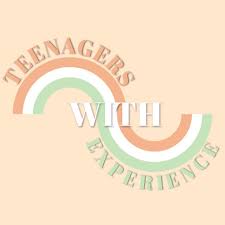|
Depression is known as the “common cold” of the mental health world. However, depression takes the form of various depressive disorders/illnesses do you know that there is more than one type of depression? Well, there are. Different types of depression are chemical imbalances that are caused by either an event that happened in your life or genetic inheritance. The stigmatisation and miseducation surrounding mental health have unfortunately made many people unaware of different types of depressive/mental disorders. This is why it is important to differentiate between them to understand mental health. Major Depression: Clinical depression involves loss of interest and pleasure in activities and/or loss of interest. As well as trouble sleeping, weight loss or gain, feeling agitated and slowed down mentally and physically. The symptoms are experienced most days and last for at least two weeks and interfere in all areas of a person’s life. Premenstrual Dysphoric Disorder: A lot of women experience moderate to severe premenstrual symptoms (PMS). Although at least 8% of these experience symptoms that prevent them from living their normal day-to-day life. This is premenstrual dysphoric disorder (PMDD). The difference between PMS and PMDD is that PMDD involves a set of physical and psychological symptoms that would harm the individual’s mental well-being. Common symptoms of PMDD are; severe fatigue, crying and emotional sensitivity, mood changes and difficulty concentrating. Postpartum Depression: The birth of a child can trigger an array of emotions, from excitement and joy to fear and anxiety. But it can also trigger depression. Women who have depression in the weeks and months after childbirth may have postpartum depression. Common symptoms include; mood swings, crying spells, anxiety and difficulty sleeping. Seasonal Affective Disorder: This is a period of depression that mostly happens during the winter months when the days grow short and you get less and less sunlight. It usually goes away in the spring and summer. SAD is diagnosed after the person has had the same symptoms during winter for a couple of years. People with SAD are more likely to experience a lack of energy, sleep too much and crave carbohydrates. Bipolar Disorder: Someone with bipolar disorder, also known as manic depression, has mood episodes that range from extremes of high energy with an up mood to love depressive periods. When you’re in a low phase, you’ll have the symptoms of major depression. Prior to my diagnosis of clinical depression, I began noticing how I would distance myself from others, sleepless or more and was constantly overthinking. Because I was never taught about mental health and because of stigma, I didn’t know that there was a chance I had depression. People would say that I was “lazy” or was “seeking attention.” That couldn’t be far from the truth. It wasn’t until I started educating myself that I understood mental health. Ways to cope with depression include: Therapy: Cognitive behavioural therapy (CBT) is a type of therapy that converts common patterns of negative thinking to control your depression. These strategies include gaining a better understanding of the behaviour and motivation of others, using problem-solving skills to cope with difficult situations and learning to develop a greater sense of confidence in one's abilities. Diet: Research shows a connection between diet and mental health. Many studies show that improving your diet can treat mental illnesses. By no means do I suggest you completely stop eating your favourite dessert but surely reduce the number of times you eat it. If you are planning on making any major changes to your diet then talk to a doctor. Sleep: If you have trouble sleeping or might sleep too much, you’ll struggle to get out of bed because regardless you’ll feel exhausted all the time. For improving your sleep try; turning off your electronics an hour before you go to bed. If you want to read a book or do another activity, do so. And only your bed for sleep. Working in bed or even your bedroom can cause you to link your bed with stress. Light therapy: This type of therapy is especially for those suffering from Seasonal Affective Disorder (SAD). This involves sitting by a special lamp called a lightbox. This produces the light that’s missing during the winter months. By sitting in front of a lightbox for 30 minutes to an hour each day you can increase the serotonin chemical in your body. Serotonin is a hormone that affects your mood. Also known as the “happy chemical.” They come in the form of a desk lamp, alarm clock or wall-mounted fixtures. Wellness toolbox: A wellness toolbox can help you relax when you are feeling down. It can be anything that will make you happy e.g. listening to music, hanging out with loved ones or playing with your pet. When you are feeling bad then choose an activity that will bring you joy. There are many forms of depression which means there are many forms of coping mechanisms. Unless diagnosed, you won’t know which one you’ll have. Just know that you aren’t alone. I know how you feel. Not wanting to get out of bed or eat or having these constant dark, loud thoughts. But let me tell you this - It will pass. I know it's a horrible feeling at the moment but just remember that it will pass. It will get better, I promise. You are so strong. Some people do care for you, whether you believe it or not. You will get through this and if you need help along the way, then get help. There is no shame. Down below is a link to get in contact with your local helplines regardless of what country you are from. :) Get in contact with your local helplines visit: https://checkpointorg.com/global/ Indie Sahota Indie
0 Comments
I am sure many teens, myself included, have a lot of pent up emotions that are not always easily understood or easy to express to others. In addition, many teens have so many everchanging personal goals and thoughts that are worth keeping and never forgetting. As an adolescent, so many emotions and thoughts run through our minds that are worth looking back on for self-reflection. The way one can relieve themselves of their emotional troubles, without the pressure that comes with speaking to another person, is through journaling. As someone who finds it quite difficult to trust others with personal information, due to the fear of being judged, journaling has proven to be a very therapeutic way for me to relieve myself of stress. Each day, I like to keep a routine of journaling throughout the day, whether it be about random thoughts or ideas, or a dream I’d had the previous night. I like to also incorporate memories in any way I can, by writing with intent so that when I look back on my entries, I will have a clear view into my past. I have been doing this on and off since I was a little girl, and have just started back again as quarantine began. The feeling of looking back on your memories and your troubles back when you were in middle school or high school is especially heartwarming, as you get to see how much you’ve grown and overcome throughout your life. Bullet-journaling, or just writing your thoughts out, can be an incredible outlet for teenagers, as there are endless ideas and goals that we are bound to lose track of. In addition, recording your own ideas and goals can make them more likely to actually be put into action, and be given clarity as to how it will be accomplished. This process can be made even more fun by personalizing your notebook, or giving it theme and structure. I recommend dedicating sections and pages to different aspects of your mind like a daily mood tracker, a bucket-list, or a collection of favorite songs from a given point in your life. Personally, I believe that journaling is a key way to organize your thoughts and emotions, especially if sometimes you feel that your emotions are constantly fluctuating. Ultimately, everything is worth it once you are able to look back on all the progress you’ve made as a person in terms of your emotional state and life accomplishments. Overall, there are infinite sources that can give someone the emotional relief they need, like drawing, singing, or watching sad movies, all of which are extremely helpful to different people. I encourage you all to explore that for yourself and prioritize it, because especially in these times of uncertainty, your mental health must come first. |
Categories
All
|
|
|
Teenagers With Experience is an online organisation created to provide teenagers worldwide with an online platform to share their own experiences to be able to help, inform and educate others on a variety of different topics. We aim to provide a safe space to all young people. You can contact us via email, social media or our contact form.
|


 RSS Feed
RSS Feed
